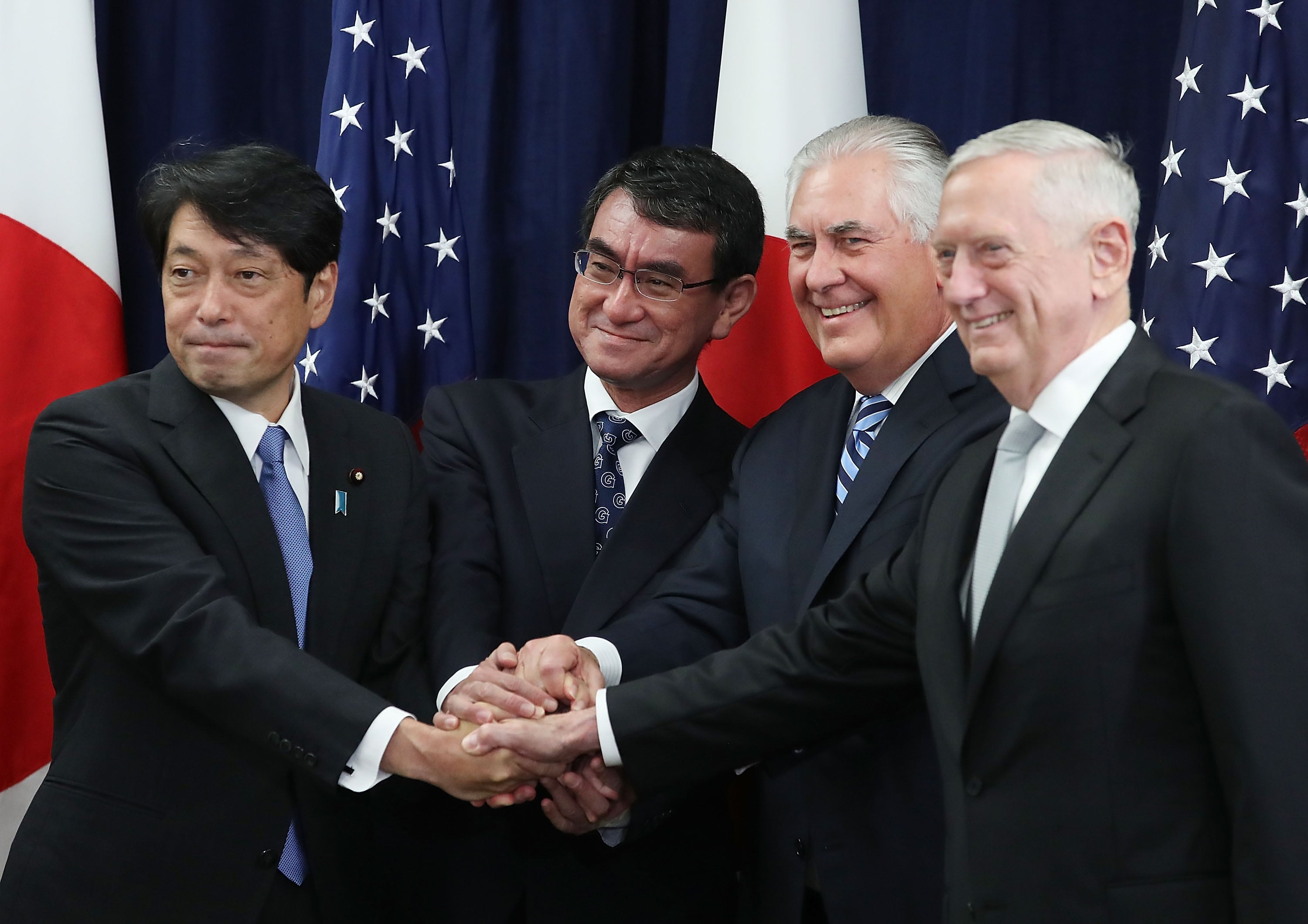WASHINGTON — In the wake of North Korea’s sixth nuclear weapons test, U.S. President Donald Trump pledged Tuesday to increase weapon sales to Japan and South Korea.
In a Tuesday morning tweet, Trump said, ”I am allowing Japan & South Korea to buy a substantially increased amount of highly sophisticated military equipment from the United States.”
The tweet followed a Monday call with South Korean President Moon Jae-in, during which Trump “provided his conceptual approval for the purchase of many billions of dollars’ worth of military weapons and equipment from the United States by South Korea,” according to a White House readout.
That readout also stated that the U.S. would look to remove limits on payloads of weapons sold to South Korea.
Requests for information from the White House and State Department were not immediately returned. Both South Korea and Japan are close military allies with the U.S. and regular customers of defense articles. Among the high-end technology sold from the U.S. to those two nations is the stealthy F-35 joint strike fighter.
While the outreach will likely be welcome in Seoul, don’t expect a massive flow of defense articles to either nation to happen in the coming weeks.
By its nature, the Foreign Military Sales program means that Trump cannot clear weapon sales and have them immediately flow towards the two Pacific nations. Under the FMS system, foreign countries must first request what they would like to buy. That request is then processed by the State Department, which checks the orders for any legal or regulatory hurdles, and then is passed on to Congress, which must OK the sale.
After that, the country begins working with the Pentagon to negotiate cost, quantity and timing with industry, a process that can drag on for years. And only then will the industrial partner begin production on the equipment. Because of this process, it can often take years between when a country declares its desire to procure American military goods and when it is finally able to use them.
There may be some near-term projects that could be bolstered for each nation, however.
One area to watch is to see if the U.S. continues to push South Korea to allow full deployment of the U.S.-operated Terminal High Altitude Area Defense missile systems, or THAAD, currently on the peninsula. Only two of a possible six THAAD launchers are deployed right now due to concerns from the new government in Seoul.
RELATED

Another option may be Japan’s interest in missile defense technology. During an Aug. 17 visit to Washington, Japanese Defense Minister Itsunori Onodera said he was hoping to push ”acquisition of new assets” in the missile defense realm, with Japanese media reporting the country seeks a quick procurement of the Aegis Ashore system.
Following North Korea’s July missile test, Moon told local media he would look into a ”temporary” deployment of all six THAAD systems. Now that Pyongyang has completed another nuclear test, it is possible the White House will push Moon to make those full deployments more permanent.
The Tweet came two days after Trump tweeted that the United States is ”considering, in addition to other options, stopping all trade with any country doing business with North Korea.”
Economists and experts were quick to point out doing so would be functionally impossible, as North Korea has trade with countries including India, Pakistan, Brazil, Saudi Arabia and, most notably, China.
Updated 9/5/17 at 11:25 AM EST with more information.
Aaron Mehta was deputy editor and senior Pentagon correspondent for Defense News, covering policy, strategy and acquisition at the highest levels of the Defense Department and its international partners.








